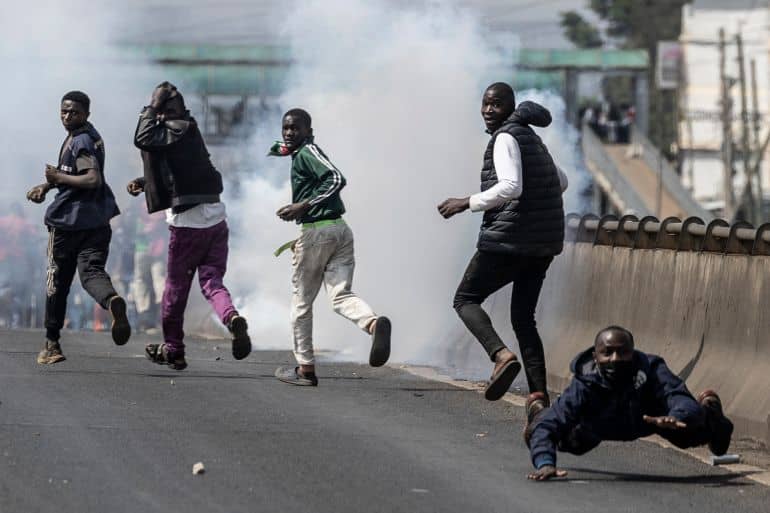At least 31 dead, 532 arrested in Kenya’s antigovernment protests
Human rights office calls for accountability after 31 people are killed, and 107 others wounded in nationwide ‘Saba Saba’ marches.

Published On 9 Jul 20259 Jul 2025
The death toll from antigovernment protests in Kenya has surged to at least 31 people, the country’s human rights commission said, with at least 107 others wounded during the nationwide marches.
In a statement on Tuesday, the National Commission on Human Rights (KNCHR) also reported two forced disappearances in the wake of Monday’s marches, which commemorated a 1990 uprising against undemocratic governance in the East African nation.
Recommended Stories
list of 4 itemsend of list
The commission, which initially gave a toll of 10 dead and 29 wounded, said it has also counted at least 532 arrests.
The marches saw clashes erupt between protesters and police in the capital, Nairobi, as well as the city of Eldoret, with the KNCHR accusing the police of cooperating with armed gangs, who were armed with machetes and spears, in the wake of the violence.
There was widespread destruction of property, too, including supermarkets.
The KNCHR said it “strongly condemns all human rights violations and urges accountability from all responsible parties including police, civilians and all other stakeholders”.
Monday’s marches marked Saba Saba Day, meaning Seven Seven, which celebrates the date when Kenyans rose up to demand a return to multi-party democracy on July 7, 1990, after years of rule by then-President Daniel arap Moi.
They came amid more than a year of mostly youth-led protests that have swept across Kenya since June 2024, when proposed tax rises triggered anger about wider issues, including the state of the economy, corruption and police brutality.
Advertisement
Protesters have also been calling on President William Ruto to resign.
Their actions have been met with harsh repression from the police.
The Law Society of Kenya and Police Reforms Working Group said that “heavily armed police with military grade weapons were deployed in violation of court orders, using masks and unmarked vehicles to conceal their identities”.
Overall, the Police Reforms Working Group said that the protests on Monday took place in 20 of Kenya’s 47 counties on Monday, including Nairobi, Kajiado, Nyeri, Mombasa, Kisii, Embu, Kisumu, Kiambu, Meru, Nakuru, Nyandarua, Vihiga, Narok, Kirinyaga, Uasin Gishu, Tharaka Nithi, Makueni, Laikipia and Kakamega.

Tuesday’s toll takes the number of people dead in the protests since they began last year to more than 100.
This includes at least 16 people killed in nationwide rallies against police brutality and government corruption in Kenya, on June 25, less than two weeks ago.
Kenyan Cabinet Secretary for the Interior Kipchumba Murkomen last week told police to “shoot on sight” anyone who approaches police stations during protests after several were burned.
The Kenya National Cohesion and Integration Commission, a government body whose commissioners are appointed by the president, on Tuesday urged politicians not to heighten ethnic tensions and criticised police for using excessive force towards protesters.
In a statement issued before the revised death toll, the United Nations human rights office, OHCHR, expressed deep concern over the killings of protesters in Kenya on Monday.
It said the deaths occurred “amid reports that police and security forces used lethal force to quell violent demonstrations in Nairobi and across the country”.
